This new model has the same familiar body design as its predecessor and uses the same 20.1-MP sensor and 28-82mm equivalent F2-4.9 zoom. Internally, however, the new model has the new and much more powerful Digic VII processor. First seen on the G7 X Mark II, this new processor can deliver continuous RAW shooting at up to 8.2 fps for 21 captures, improved AF tracking, enhanced scene recognition, and in-camera RAW conversion. Canon has also added dual sensing image stabilization that reportedly offers up to 3.5 stops of correction.
Overall image quality
For a 1-inch sensor, the Canon G9 X Mark II’s overall score is good, but it’s still fractionally behind the best in class. Dynamic range is a high 12.5 EV at base, and the sports score of 522 ISO is on par with the best performers, but it’s at the expense of color depth, which while good, is still a little behind the better-performing sensors. While the sensor performance is mostly unchanged, the impressive 8.2 fps capability over its forerunner is due to the adoption of the new processor.
Image quality results (use case comparison)
Against its predecessor, the new Mark II model’s sensor performance is practically identical. Granted, there’s some improvement (0.4 bits) in color depth scores at base, along with a corresponding increase in the dynamic range in the lab, but in real terms it’s negligible. This similarity is underlined in the low-light scores, where the Mark II achieved 522 ISO — which in terms of real-world results is no different than the 495 ISO figure for the older model.
While the G9 X Mark II is commendably small, the $700 Canon G7 X isn’t a lot larger, and although it has been replaced by a new Mark II version. We tested the original version, which has a slightly better-performing sensor than the non-BSI sensor used in the G9 X models. Admittedly, the dynamic range scores are similar; however, the G7 X has slightly better color depth at lower ISOs along with the expected increase in low-light ISO scores (though in fairness, the increase is really only slight). Sony’s $1000 DSC-RX100 V fares almost identically in our metrics, suggesting a similarly-sourced sensor. While all three models are attractive for their diminutive proportions, courtesy of that 1-inch type sensor, all three are weak in low-light.
All three share very good image quality at base ISO, with the Sony RX100 V just nudging the excellent score at 38dB; but as gain is applied, image quality drops to 32.5 dB for the G9 X Mark II at just ISO 400 (manufacturer), with the 30dB threshold reached at 522 ISO.
In practical terms, that means keeping the ISO levels low and shooting in good light when using the high-speed 8 fps burst shooting. Ramping ISO to achieve faster shutter speeds along with that frame rate is fine to ISO 800 (manufacturer), but should be avoided above that when image quality is paramount.
Along with the others in this comparison, the G9 X Mark II achieves dynamic range in excess of 10 EV up to ISO 800, which is impressive given the small sensor size, and of course the widest dynamic range (measured at 12.5EV) is attained at base.
Although the G9 X Mark II has a good color discrimination at low ISOs, achieving in excess of an excellent 20 bits up to ISO 200, it is here that the BSI sensors in the Sony RX100 V and the sibling G7 X show some performance gains. Both those models can stretch to ISO 400 (manufacturer) before dipping beneath 20 bits.
Overall, the G9 X Mark II performs exceedingly well in good light at low ISOs and still performs very well up to ISO 400. Above that, it’s time to rely more heavily on stabilization or, better still, a tripod. At ISO 800, or 1600 at a push, results for color and dynamic are still acceptable but Raw files will benefit greatly from noise reduction in post-production software.
Conclusion
Most if not all the improvements in the G9 X Mark II — the improved AF tracking, the enhanced scene recognition, and in-camera RAW conversion — are all processor intensive and come courtesy of the new, more powerful image processor. Obviously, that also includes the impressive RAW burst of 8.2 fps for 21 frames (compare that to the 1 fps in RAW — 6 fps JPEG — of the original G9 X model!). Image quality, however, hasn’t been improved, at least not in RAW, but the new model remains a capable performer outdoors in good light, with respectable color and dynamic range up to ISO 400. In low light, ISO 800 may still be acceptable; however, you can expect to use some software to improve the results.
Highlights (specifications)
- 20.1-MP DX 1-in type CMOS sensor
- Digic 7 image processor
- 3x optical zoom F2-4.9
- 28-84mm (equiv.) with dynamic IS
- 3.0 in 1.04M-dot touchscreen LCD monitor
- Full HD video up to 60 fps
- ISO 100-12800 (with expansion)
- 8.2 fps continuous shooting in RAW
- Built-in Bluetooth and WiFi with NFC connectivity
Canon G9X potential drawbacks
- Slow maximum aperture at long focal lengths
- Still only 1080p video — no 4K option
- 21MP resolution instead of the more typical 24MP, to allow high frame rate
For further consideration
Admittedly there are better performers with more versatile zooms, such as the G7 X and the Sony RX100 variants. More serious photographers looking for a leap in image quality, particularly in terms of low-light capability, would likely be willing to sacrifice the convenience of a zoom in favor of larger sensor. For example, the $800 APS-C format Ricoh GR II has a high-grade fixed focal length 28mm-equivalent F2.8 lens and exceptional sensor performance (with a DxOMark score of 80 points). Still, for the price, the G9 X Mark II has a lot going for it.


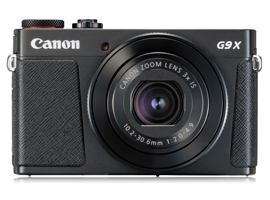




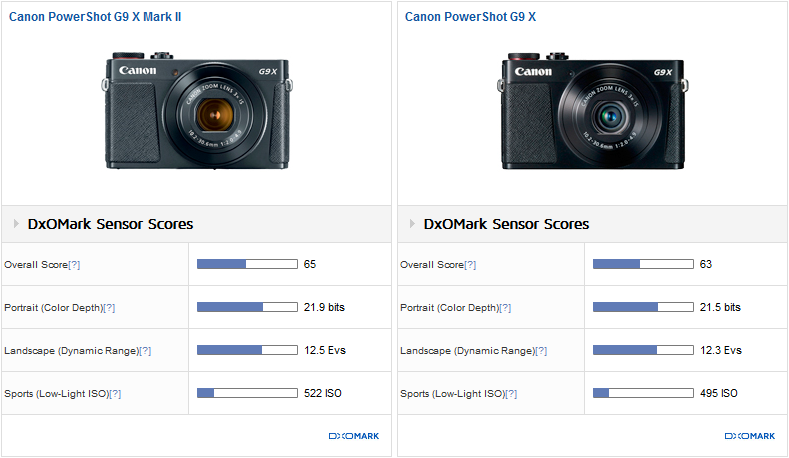
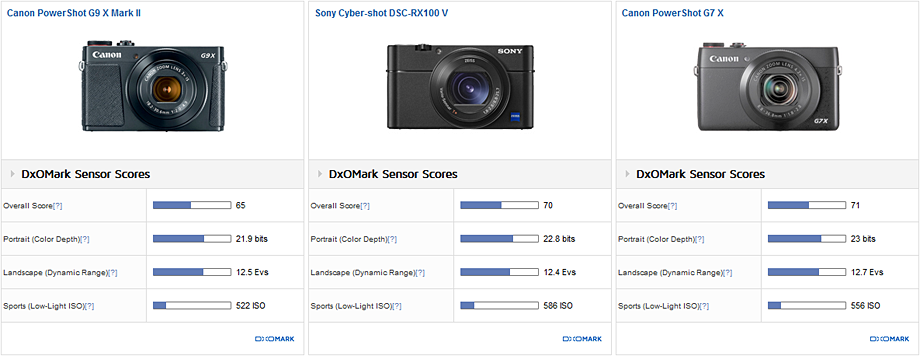
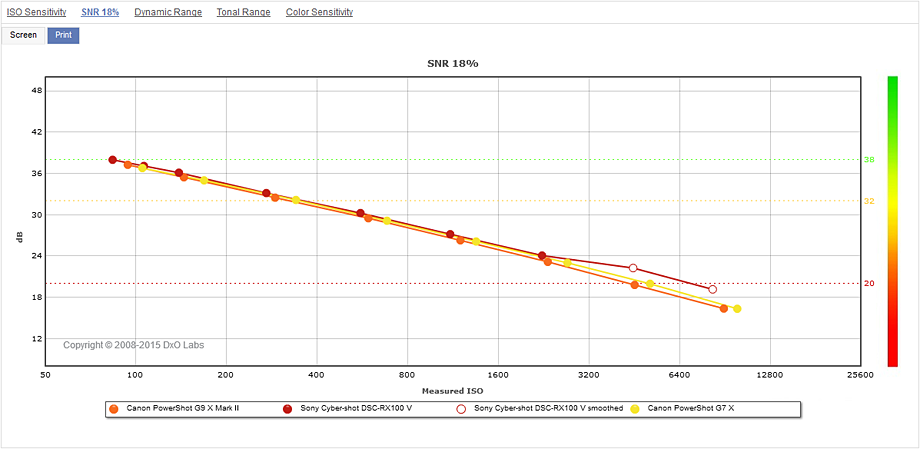
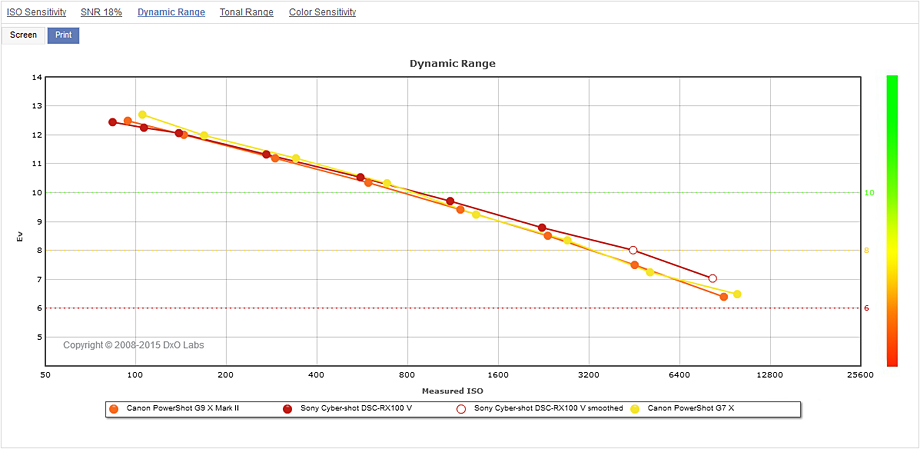
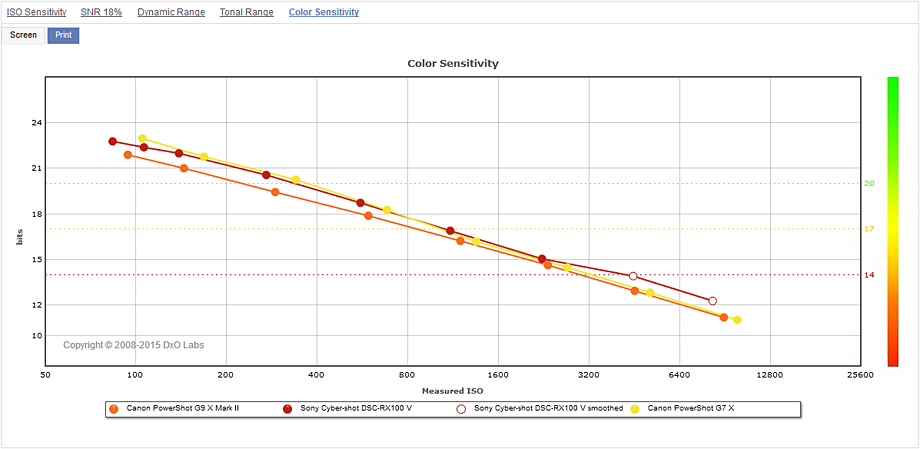
DXOMARK encourages its readers to share comments on the articles. To read or post comments, Disqus cookies are required. Change your Cookies Preferences and read more about our Comment Policy.